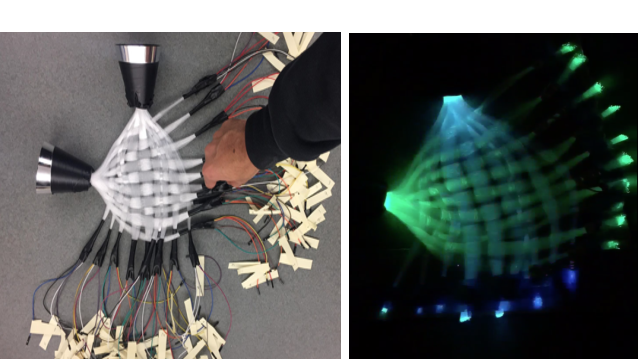https://www.nime.org/proceedings/2019/nime2019_paper088.pdf
IllumiWear, a novel eTextile prototype that uses fiber optic cables as interactive input and visual output.
Having considered the concept of IIllumiWear, I was amazed at this idea. This is a new opportunity for interaction with a computer and interfaces.
The idea is that fiber optic cables are separated into bundles and then woven like a basket into a bendable glowing fabric. By equipping light emitting diodes to one side of these bundles and photodiode light intensity sensors to the other, loss of light intensity can be measured when the fabric is bent.
The sensing technique of IllumiWear is not only able to discriminate between discreet touch, slight bends, and harsh bends, but also recover the location of deformation. In this way, this computational fabric prototype uses its intrinsic means of visual output (light) as a tool for interactive input.

Hardware Implementation.
To implement our prototype, we divide all the optic fibers evenly
into twenty bundles which are then woven like a basket. This
fabrication process forms a ten by ten mesh.

Finally they conducted four experiments based on the motivation.
- Sensing Micro-bend
- Sensing Macro-bend
- Intersections
- Color variation-based input
Conclusion.
Thus, IllumiWear opens up great opportunities for use. The IllumiWear is able to recognise the difference between a different types of touch and bends, this also help to recover the exact location of these deformations.
At least 5 interaction modes:
- location-based touch input
- pressure sensitivity
- sliding gesture
- bend input and tangible deformation
- input based on changes in light and color